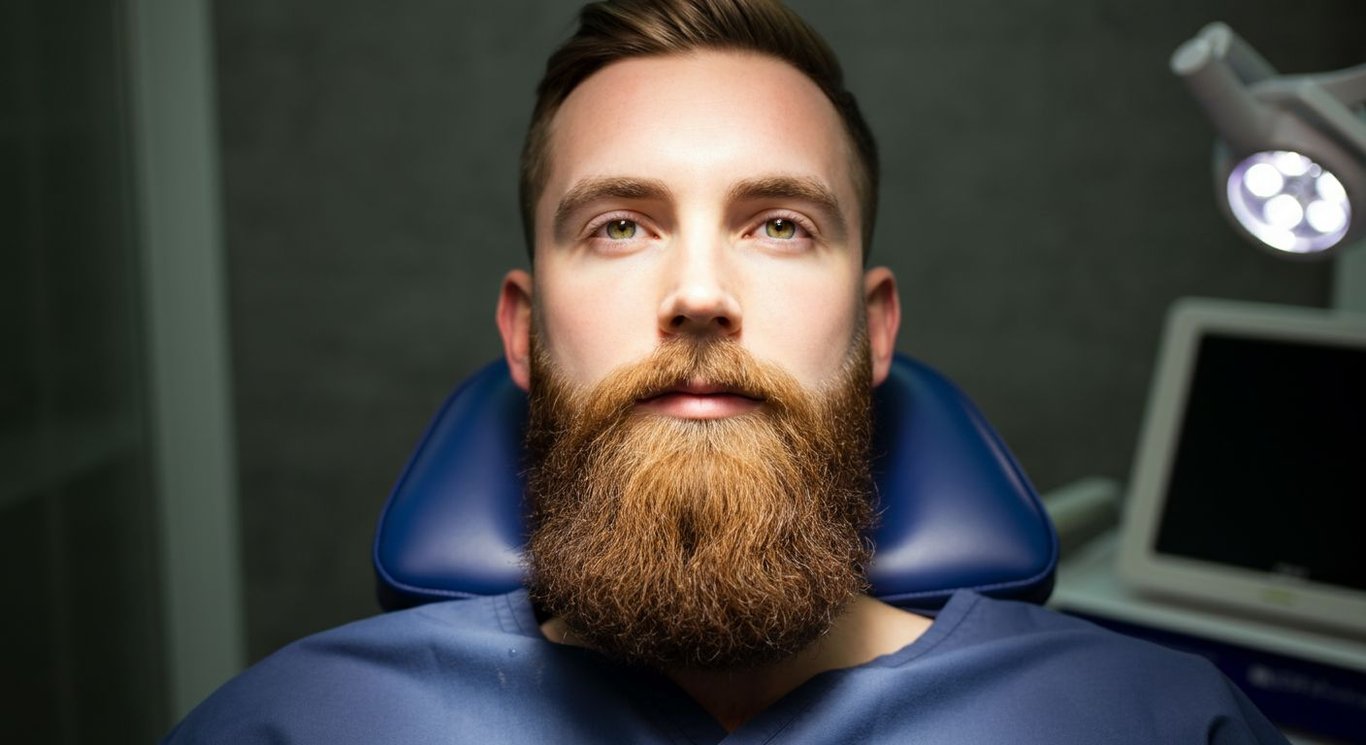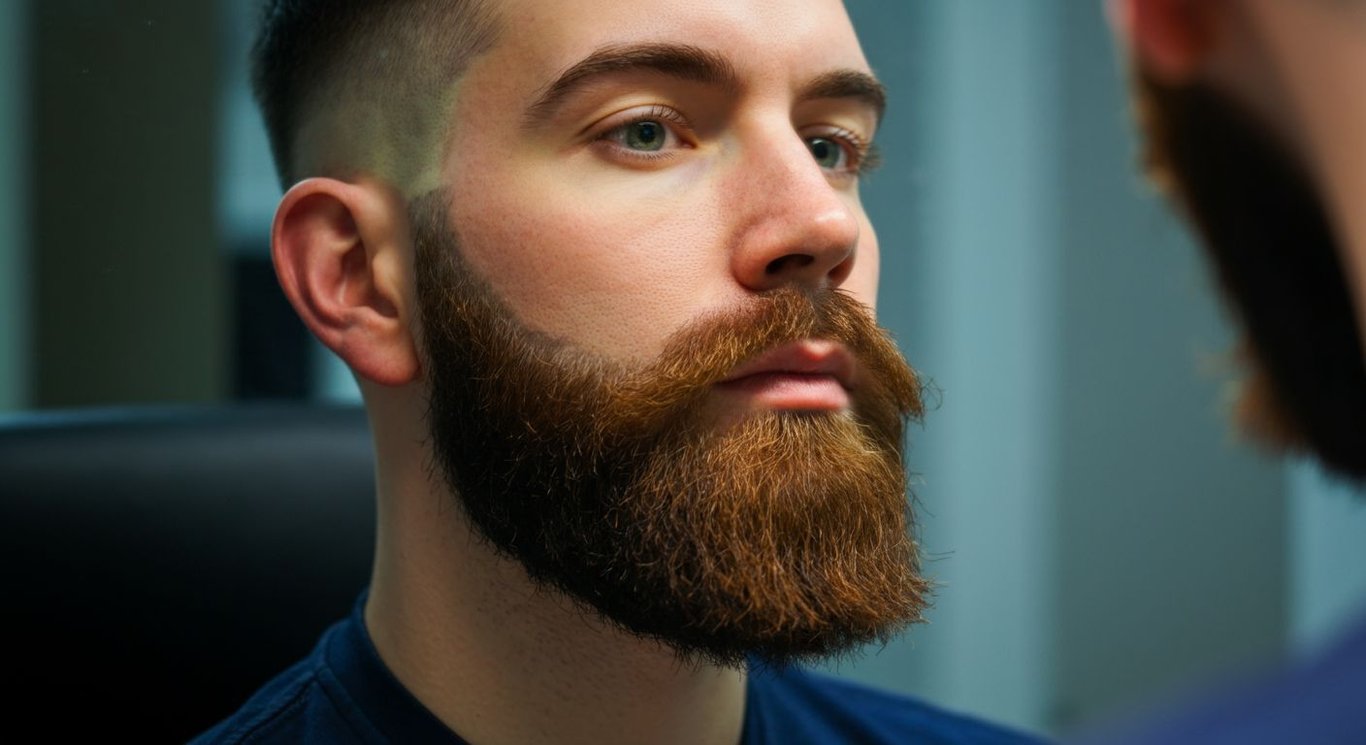Unlock Your Full Potential: The Ultimate Beard Transplant Guide
Unlock the full potential of your appearance with our expert beard transplant guide. Learn all about techniques, results, and aftercare to achieve your ideal look.
Discover the transformative potential of beard transplantation, an increasingly popular procedure for men seeking to enhance facial aesthetics. From determining if it's right for you to understanding different techniques and aftercare, this comprehensive guide covers all aspects of the beard transplant journey.
Facial Hair Transplant: Is It Right for You?
Understanding the Possibilities of Beard Restoration
Considering a facial hair transplant involves contemplating numerous factors, from personal aesthetic goals to potential outcomes. Beard transplants, including the popular methods of FUE (Follicular Unit Extraction) and DHI (Direct Hair Implantation), offer solutions to patchy or sparse facial hair. Understanding your facial structure and hair growth pattern can significantly inform your decision, ensuring that a beard transplant aligns with your needs.
Exploring Techniques in Facial Hair Transplantation
Facial hair transplantation has evolved significantly, offering refined techniques to achieve natural-looking results. Procedures like Follicular Unit Extraction beard ensure precision in graft placement, enhancing beard density and symmetry. Beyond aesthetics, these advancements cater to those seeking beard hair implants to correct scarring or congenital hair loss, improving both appearance and self-esteem. Exploring beard transplants reveals that the technological advancements redefine options for facial aesthetics.
- FUE ensures minimal scarring and quicker recovery, allowing for a discreet return to daily activities.
- DHI allows direct implantation without creating incision holes, which promotes faster healing.
- Advanced imaging technologies provide detailed pre-operative planning for a more predictable outcome.
Selecting the right method involves assessing individual needs and consulting with experienced specialists.
Factors Influencing Beard Transplant Success
The success of a beard transplant hinges on several key factors that must be carefully considered. The density of the donor area, typically the back of the scalp, is crucial, as it determines the availability of healthy hair follicles for transplantation. Hair characteristics, such as texture and color, also play a significant role in ensuring that the transplanted hair blends seamlessly with existing facial hair. Equally important is the recipient area's blood supply, which directly affects the survival rate of the transplanted follicles. Proper post-operative care is essential for optimal healing and follicle establishment.
- Assessment of Donor Hair: Evaluating the density, texture, and color match to ensure a natural blend with existing facial hair.
- Planning the Hairline: Skillfully designing the beard shape to complement the patient's facial structure.
- Post-Operative Care: Adhering to a strict regimen including medication, gentle cleaning, and avoidance of sun exposure to enhance graft survival.
By addressing these elements, individuals can significantly improve their chances of achieving a satisfactory and lasting beard restoration.

Beard Restoration Techniques: FUE, DHI, and More
Comparing FUE and DHI Methods for Beard Transplants
Beard restoration is enhanced through advanced techniques. FUE involves extracting individual hair follicles from a donor site and transplanting them to the beard area. DHI uses a Choi pen for direct hair implantation. Each provides unique benefits; DHI ensures precision and density without pre-made channels. The suitable method depends on the person's specific needs and desired results. Selecting between FUE and DHI requires careful evaluation by a skilled surgeon who understands nuances for optimal outcomes.
Optimal Density and Natural Look with FUE and DHI
Achieving optimal density and a natural appearance are key goals. FUE allows for precise placement of grafts. DHI enhances density by directly implanting without incisions. Both methods ensure transplanted hairs blend seamlessly with existing ones, enhancing the overall aesthetic. The surgeon's skill is crucial for creating a natural-looking beard, respecting the individual's hair growth patterns. These advancements ensure a natural, full beard that complements the person's facial features.
- FUE: Allows individual follicle placement for a custom beard design.
- DHI: Minimizes trauma.
- Both: Ensure natural blend.
The choice between FUE and DHI should align with client hair type for beard restoration.
- Initial Consultation: Set aesthetic expectations with facial assessment.
- Follicle Extraction: Select donor sites and graft hair with precision.
- Implantation: Place grafts to match beard growth patterns.
The results should be a fuller, more natural looking beard.

Beard Transplant Before & After: What Results Can You Expect?
Realistic Expectations Post Beard Restoration
Potential patients are often curious about the changes post-procedure. Typically, you can expect noticeable improvements, including fuller and more aesthetic facial hair. The results vary based on individual characteristics and the expertise of the clinic chosen. At estethica, cutting-edge techniques and experienced professionals ensure optimal outcomes that boost confidence and enhance personal style.
Achieving Enhanced Facial Aesthetics with Beard Implants
Following a facial hair transplant, the transformation extends beyond mere hair growth, often leading to significant aesthetic enhancement. Individuals commonly observe an increase in facial definition, which not only alters the face's appearance but also boosts self-esteem. A well-executed beard transplant can also address concerns such as asymmetry or patchiness. The enhancement creates a more harmonious and balanced facial structure. This is particularly beneficial for those seeking to refine their personal image.
- Improved Facial Symmetry: Correcting imbalances in facial hair growth.
- Scar Coverage: Effectively concealing acne scars or surgical marks.
- Enhanced Definition: Accentuating the jawline and other facial features.
These results make beard transplants a transformative aesthetic solution.
- Initial Growth: Noticeable hair growth within the first few months.
- Maturation Phase: Continued thickening and natural alignment of transplanted hairs.
- Long-Term Stability: Permanent results that maintain density and shape.
Through estethica's method, patients gain beard density and facial aesthetics.

Achieving the Perfect Beard: Essential Aftercare Tips
Essential Steps for Post-Transplant Recovery
Following a beard transplant, diligent aftercare is paramount for ensuring the successful integration of the newly transplanted follicles. This involves consistent hydration of the skin to promote healing, meticulous cleaning to prevent infections, and careful handling to avoid any trauma to the treated areas. Adherence to these measures is crucial in optimizing both comfort and the aesthetic outcome of the procedure. Ignoring proper aftercare can impede the healing process and diminish the quality of the beard restoration. At estethica, a dedicated team provides aftercare tailored to individual needs, maximizing patient satisfaction.
- Hydration: Keeps skin supple and promotes optimal healing of grafts.
- Gentle Cleaning: Prevents infection around new hair follicles.
- Careful Handling: Avoids dislodging vulnerable transplanted hairs.
Maximizing Growth and Density After Your Beard Transplant
To achieve the fullest and most natural-looking beard after a transplant, strategic aftercare steps are essential. These include adopting specific washing techniques to encourage healthy growth, adhering to a regimen of prescribed medications to support follicle strength, and steering clear of direct sunlight to prevent damage to the newly implanted grafts. Such practices not only enhance the survival rate of the transplanted hairs but also contribute to the beard’s overall density and aesthetic appeal over time. Incorporating these aftercare strategies ensures the longevity and success of your facial hair transplant
- Gentle Washing: Use mild shampoo to stimulate growth.
- Medication Adherence: Follow doctor’s prescriptions for follicle support.
- Sun Protection: Shield grafts from harmful UV rays.
Precision Beard Restoration with FUE and DHI Techniques
estethica employs both Follicular Unit Extraction (FUE) and Direct Hair Implantation (DHI) techniques for beard restoration, ensuring tailored solutions for each patient's unique needs. DHI utilizes a Choi pen for direct implantation, maximizing precision and graft density without creating pre-made channels, while FUE allows for individual follicle placement, enabling customized beard designs.
estethica’s beard transplant procedures are performed by experienced surgeons who specialize in facial aesthetics. They conduct thorough pre-operative assessments to evaluate donor hair density, hair characteristics, and recipient area blood supply, ensuring optimal conditions for successful transplantation. Their expertise extends to designing natural-looking hairlines that complement individual facial structures, enhancing overall aesthetic outcomes.
Meticulous Aftercare Process Enhancing Graft Survival Rates
estethica emphasizes diligent aftercare to ensure the successful integration of transplanted follicles and provides patients with tailored aftercare plans designed to optimize comfort and aesthetic outcomes. The aftercare includes consistent skin hydration to promote healing, gentle cleaning to prevent infection, and careful handling to avoid trauma to treated areas. Strict sun protection protocols are implemented to protect grafts from harmful UV rays.
Patients at estethica experience noticeable improvements in facial hair fullness and aesthetics, leading to increased self-confidence and personal style enhancement. With personalized methods and a focus on natural-looking outcomes, estethica has consistently delivered high patient satisfaction by focusing on post-operative care and long-term hair follicle establishment. The quality of service is further enhanced by a dedicated patient follow-up system ensuring continuous support.
Frequently Asked Questions
What factors determine if a Facial Hair Transplant is right for me?
What are the key differences between FUE and DHI techniques in Beard Restoration?
What results can I realistically expect after a Beard Transplant?
What essential aftercare steps are crucial for maximizing the success of my Beard Transplant?
Achieve your aesthetic aspirations with estethica's personalized care and expertise.
📞 Call Now for a Free Consultation!